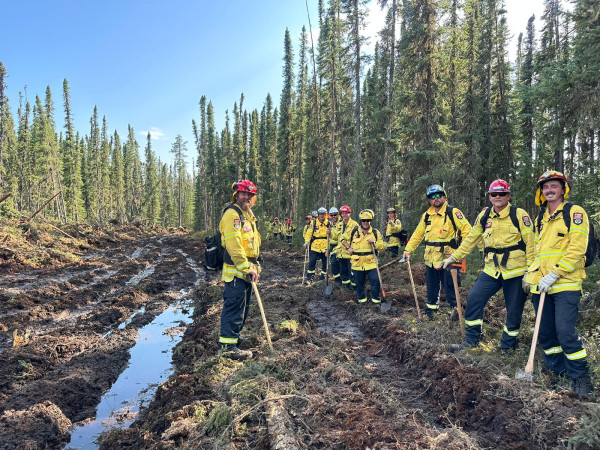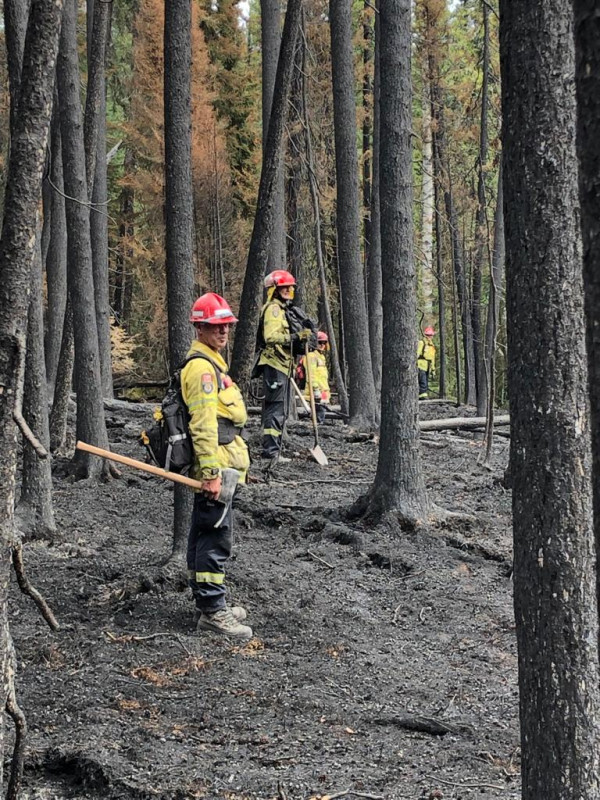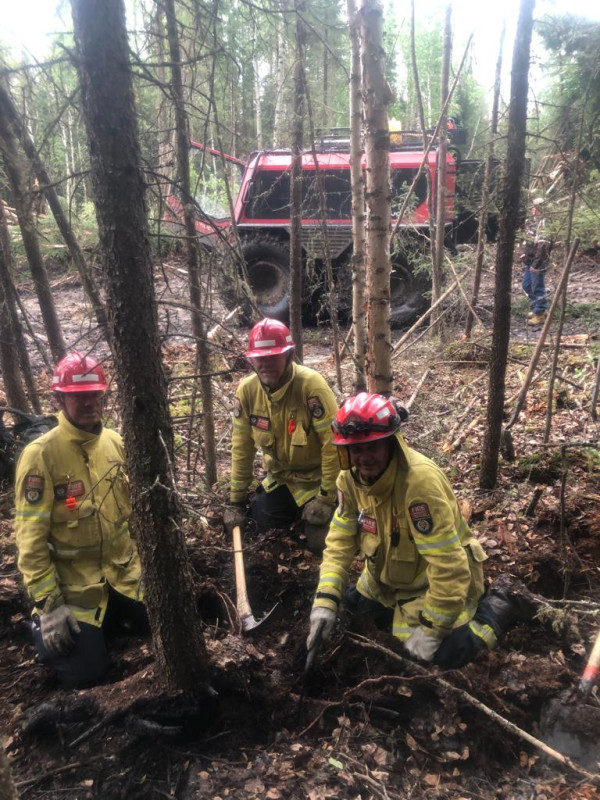Fire and Emergency crews assisting the Canada wildfire efforts
2 Pipiri 2023

After a long trip, the contingent from Fire and Emergency has arrived in Alberta and is hard at work helping to fight a high number of wildfires raging across the Western part of Canada.
The fires are part of an early onset to the Canadian wildfire season, for which the Canadian Interagency Forest Fire Centre (CIFFC) has sought international assistance to fight.
Fire and Emergency deployed a group of 25 firefighters last Thursday to support CIFFC, joining a large Australian contingent, who are also providing support.
Steph Rotarangi, Fire and Emergency New Zealand’s Deputy National Commander, says Fire and Emergency's contingent is spread around the province of Alberta, specifically assisting with arduous conditions firefighting, incident management requirements and air operations.

“We have people in the High Level Forest and Edson Forest areas, while the bulk of our contingent are based in the Slave Lake Forest Area.”
At Slave Lake, crews are currently focussed on securing the active fire edge to help protect a number of settlements. They’re mopping up, running pumps, digging out hotspots, cutting fallen branches, clearing access tracks and escape routes.
“It’s important work in fighting fires of this magnitude. It’s great for our own learning and experience bit also vital work to protect the people and province of Alberta,” Steph says.
This is Fire and Emergency's first deployment to Canada this year, but may not be the last given the scale and severity of the wildfires being battled.
“The situation in western Canada is significant and the impact immense. In Alberta alone 11 new fires were recorded on Tuesday meaning there are now a total of 69 active fires and a total area of 1.09 million hectares burnt. We’re glad to be able to provide help to CIFFC with what they’re experiencing so early in their wildfire season,” Steph Rotarangi says.

The conditions remain challenging, particularly when high temperatures combine with moderate to strong wind. There has been some rain in the middle and lower parts of Alberta, which has been welcome, but more is needed alongside firefighting efforts to make a significant impact.
“Understanding the potential impacts of the weather becomes crucial in dealing with wildfires so Incident Management teams can plan and react quickly to the conditions. Communications are also essential to ensure our firefighters are informed of weather changes across a vast and remote landscape,” Steph Rotarangi says.
Fire and Emergency's contingent will be providing support in Canada for 4-6 weeks before returning home.

This year’s wildfire season in Canada has started earlier than predicted due to unseasonably warm and dry weather. Alberta isn’t the only area under pressure from wildfires. Neighbouring British Columbia and now Nova Scotia are also battling wildfires.













